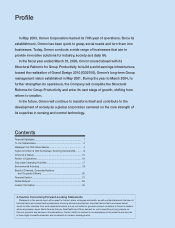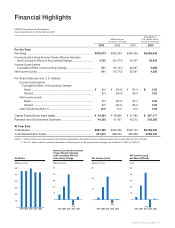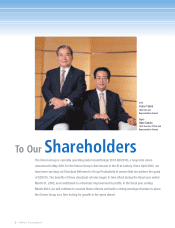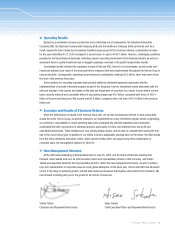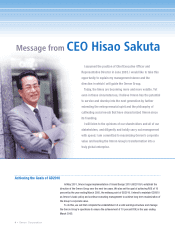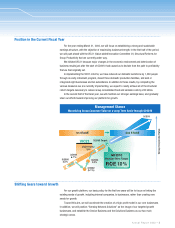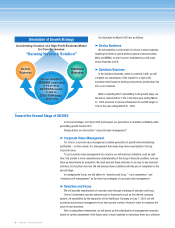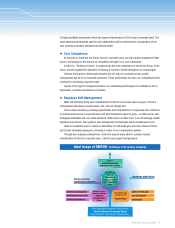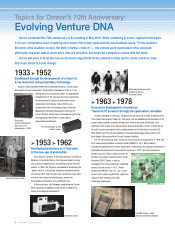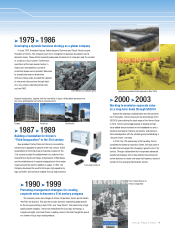Omron 2003 Annual Report Download - page 10
Download and view the complete annual report
Please find page 10 of the 2003 Omron annual report below. You can navigate through the pages in the report by either clicking on the pages listed below, or by using the keyword search tool below to find specific information within the annual report.
8• Omron Corporation
Evolving Venture DNA
Topics for Omron’s 70th Anniversary:
Omron celebrated the 70th anniversary of its founding in May 2003. While continuing to evolve original technologies
in its core competence area of sensing and control, Omron has expanded into new business areas. “To the machine,
the work of the machine; to man, the thrill of further creation” — the venture spirit manifested in this corporate
philosophy has been passed down since Omron’s inception, and helps the Company to evolve with the times.
Omron will work to meet the new social needs engendered by the network society, and to create customer value
that stays ahead of social change.
1933 ➤1952
Established through the development of a timer for
X-ray machines using proprietary technology
Kazuma Tateisi founded Tateisi Electric Manufacturing Co., which would
later become Omron Corporation. Successfully developing a timer for X-ray
photography and a precision switch, the subsequent
establishment of the Company led to the opportunity
for development of advanced automated control
(cybernation) technology. Tateisi Electric was
incorporated after it had passed Japan Electrical
Measuring Instruments Association testing of its
current limiters, which were in demand during the fuel
shortages after World War II, and became a
designated manufacturer.
➤1953 ➤1962
Developing businesses as a forerunner
in the new age of automation
After Kazuma Tateisi’s 1953 inspection tour of electrical
factories in the United States, the Company began to bring
many control components for automated systems onto the
market. In 1960, the Company succeeded in developing the
“dream switch,” a solid state contactless proximity switch
using transistors, and the solid state contactless relay, both
of which were hailed as breakthrough, pioneering
technological innovations on a worldwide level.
In the same year, the Company established the Central
R&D Laboratory in Nagaoka, Kyoto as the foundation for
further technological development.
➤1963 ➤1978
Successive development of numerous
“world-first” products through the cybernation revolution
Omron developed an electronic vending machine and a bill changer to display at the
1963 Tokyo International Trade Fair. Thereafter, Omron established the foundation of its
present social systems business through such feats as successful field tests of its
automatic traffic signal at the Kawaramachi-Sanjo intersection in Kyoto, introduction of
its multi-function automated ticket vending machine at the Kokutetsu (currently JR)
Kobe Station, and the joint development of automated passenger gate systems with
Kinki Nippon Railway and Kinki Sharyo Research Institute.
For the manufacturing floor, Omron launched a sequence programmer in 1968 and
an IC-based programmable controller called SYSMAC in 1972. Both products
contributed substantially to factory automation. Furthermore, the Company launched its
international business with incorporations overseas in 1970, upon the occasion of
founder Kazuma Tateisi’s announcement of
his Seed-Innovation to Need-Impetus Cyclic
Evolution (SINIC) Theory, a tool for
management to make predictions regarding
society’s future needs. In 1972, Omron
established OMRON Taiyo Co., Ltd., a joint
venture with welfare organization Japan Sun
Industries that employs physically
challenged employees.
Successful
commercialization of
timers for X-ray
photography in 1933 The first precision switch
made in Japan
Solid state switch
Automated passenger gate
installed at Hankyu
Kita-senri Station
Founder Kazuma Tateisi
The SINIC Theory, which
attracted worldwide attention
OMRON Taiyo Co., Ltd.


